Relationship Between Art and Technology in the Ancient Art
Both art and technology define and proceed to reshape the world we live in. Re-imagining what we know equally real or as a solid ground pushes our opinions and understandings of nature to the limits. And with new inventions and experiments, both the listen and the torso, the language, and the world itself seems to be making room for a different sphere and fresh rules. Governed by the new aesthetics, the virtual, the scientific and the logic that is beyond belief, technology in art challenges our perceptions and that is what creativity and scientific discipline are all almost. If we are to sympathize that artistic production reflects the period of time we are all in, how are we to grasp the growing number of young contemporary authors that base their practice on the presentation of immaterial and ephemeral things?
The change of artworks' nature forth with the shift in the public interaction and the reshaping of the museums and exhibition spaces are making more room today than ever earlier for some of the most amazing examples of fine art and technology mix through digital art, kinetic pieces, and works that explore the internet and online existence. The sci-fi mysteries of various movies that were mind-blowing only a decade or then, today shape the face of our reality. This function of the innovative computer-based face up, the traditional paintings and sculpture cannot capture to its fullest and that is why the fresh materials, such as information, pixels, mathematical and engineer formulas are the tools number of gimmicky creatives achieve for.

The Beginning of the Art and Technology Story
The truth is that engineering science has been providing creatives with original means of expression since its beginning. The major shifts, like the transition from the analogue to the digitally created expression, or to even go back further in time, the nascence of Impressionism, the famous silkscreen prints of Andy Warhol, or the disturbing operation works by Stelarc would not be possible if technology and science, parallel to the creativities' road, did non push for original production and new frontiers. Creatives similar scientists explore materials, people, civilization, histories, religion, and the gained knowledge transform into something else. One of the primeval personas associated with scientific research is the famous Leonardo da Vinci, and to the investigating minds of the 17th-century, we owe the invention of the microscope and the telescope. Along with the investigation of eye's perception and the colour theory, the birth of photography, and the moving pictures of Walt Disney, nothing else has helped to transform activities such as painting, drawing, sculpture, and music than the invention of the estimator between 1936 and 1938. With information technology, a completely different agreement towards the creative production and relationship between art and technology was born.
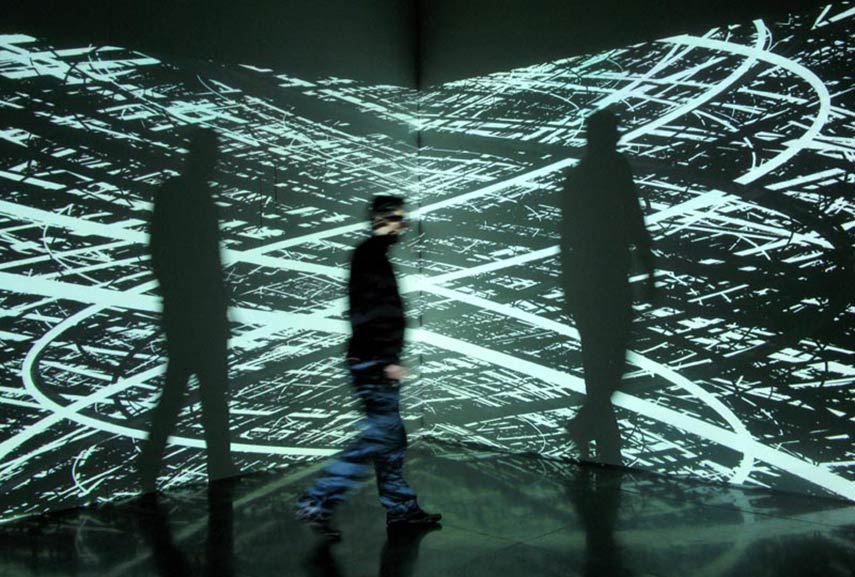
The New Media Production
Since the 1960's the term new media art was coined and information technology was used to describe practices that apply computer applied science as an essential part of the artistic procedure and product. Placing the term nether a vast umbrella known as new media, computer production, video art , computer-based installations, and later the Internet and Post Internet art and exploration of the virtual reality became recognized as artistic practices. The term, in the gimmicky practice, refers to the use of mass production and the manipulation of the virtual world, its tools and programs. Every bit such, designers and artists for the product of commercial pieces or for more than elaborate and conceptual works implement many unlike estimator programs, such equally 3D modeling, Illustrator, or Photoshop. The appointment of technology and science and the application of its language spread into space and many computer-based installations fuse the conceptual and the new media. With the constant technological developments, the fresh artful was formed and many of the creatives that have chosen to create in the virtual arena of the Internet, comment upon the fusion of the virtual and the existent, and question the communication and accessibility of their works in the parallel globe. The innovative developments opened upward a fresh playground, where different authors could merge different skills and tools and offer to us, as their public a completely original perspective of the present we all share.
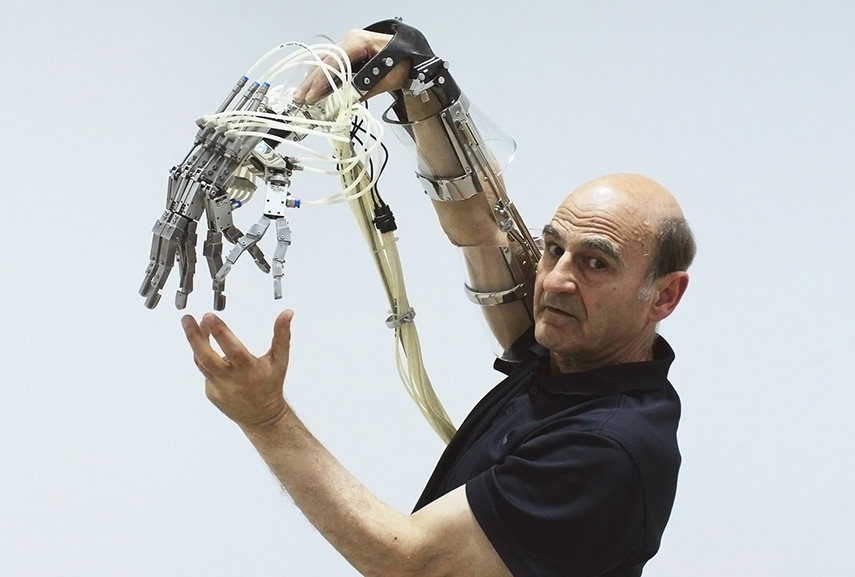
Trends and Creatives Whose Work Would Not Be Possible Without Engineering science
Regardless of what your opinion concerning the relationship between art and technology is, information technology'southward a genuine fact that technology offers something that young aspiring authors e'er desired - untouched grounds to explore, to discover something completely their own and sever ties with whatever is considered to exist traditional, giving an opportunity to push the established boundaries. This has been true ever since the kickoff modern steps of technology - for example, how the invention of lantern influenced luminism, or how colour tubes allowed painters to pigment Plein air and later led them to impressionism, or the time Joseph Nicephore Niepce invented primitive photography and influenced creativity for over 200 years now. As was the instance in those periods, the modern time has its own inventions and innovations that are influencing various creatives, finer being a reflection of the time in which it was made - an essential part of art's nature that volition never change. In that location are many contemporary authors who have decided to say no to brushes and chisels, boldly deciding to venture off into the unknown and test themselves in original techniques that were incommunicable only a couple of decades ago.
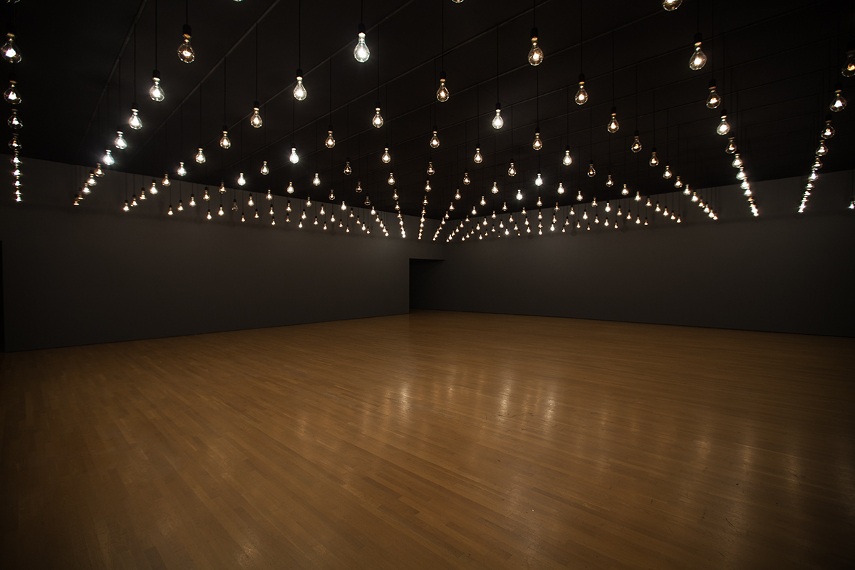
Artistic Chemistry of Kim Keever
The honour of starting out our listing of mod authors who depend on technologies goes to Kim Keever, a modern-day hydroponic equivalent of Jackson Pollock. This American author devised a method in which he drizzles paint into a 200-gallon fish tank, creating some magnificent effects before taking photos of the colorful chemical reactions. His work is so astonishing that it fascinates you whilst also leaving you puzzled, questioning which medium you lot are really observing.
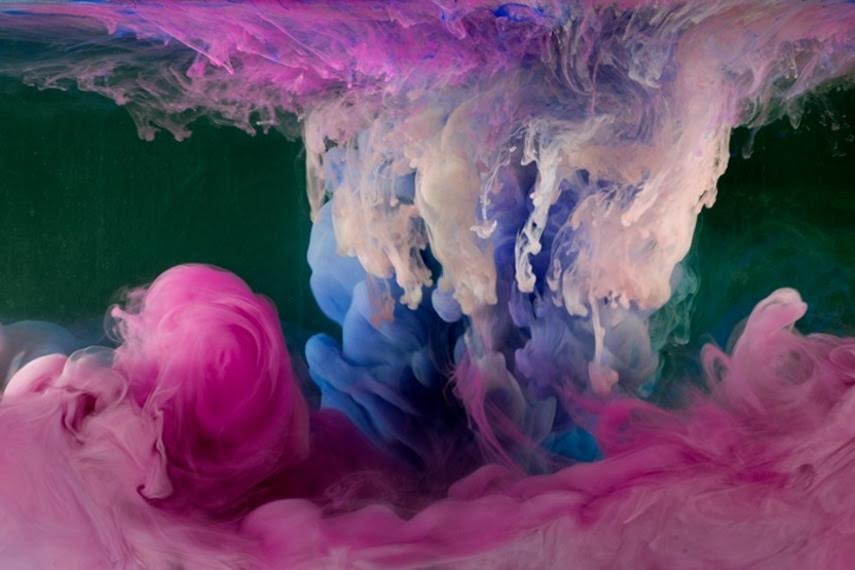
Eric Standley'southward Papers and Lasers
Keever learned how to manipulate chemistry thanks to his NASA experiences and scientific background, something that can also be said to some extent virtually Eric Standley who grew up in a household of engineers. Standley'southward paper-cut artworks expand the traditional use of the medium as he works with lasers, shredding with information technology upwards of 250 sheets of archival newspaper. The well-nigh impressive aspect of his product is the number of details he is able to reach as his pieces are incredibly detailed and miniature.

Robotics of Yuri Suzuki
Some other artistic who relies heavily on science is a Japanese designer Yuri Suzuki. He is mostly famous for his work with will.i.am, namely Pyramidi, a piece made out of a trio of robotic instruments, deconstructed versions of a piano, a guitar and a drum. The fascinating skill of technology a slice like Pyramidi would be impressive enough, simply Suzuki takes information technology another step forward and grants it an artistic note.
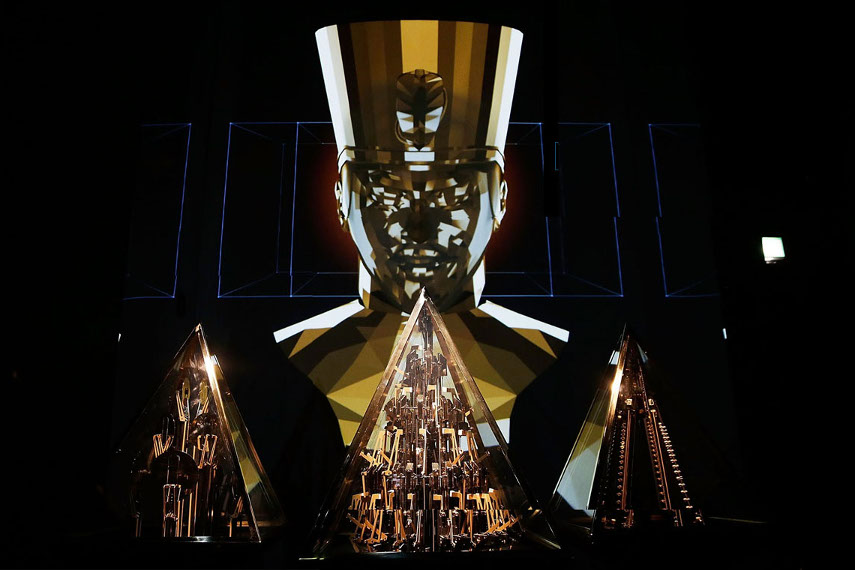
Cai Guo-Qiang and His Explosions
A scrap more extreme than previous authors on this list, Cai Guo-Qiang is a Chinese writer who loves to experiment with the explosive nature of gunpowder and its modern variations, initiating what he loves to call ignition events - after the controlled explosion, we are left with traces of an image that are literally burned into the surface. Cai Guo-Qiang also works in installations and performances, often combining many elements of engineering and scientific discipline in society to achieve the desired effects.
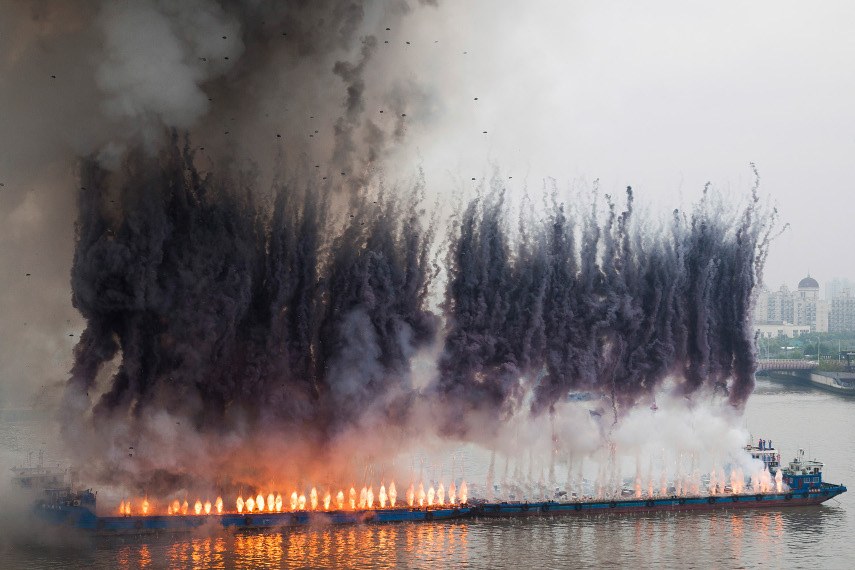
The Fascination with Internet
Logically, much of mod production that is somehow tied to science is concentrated on the Internet and the online world that altered the art scene in so many ways - providing an opportunity for literally anyone to display his work and for the audition to seek out whatsoever piece that interests them, not to mention the way the Internet impacted the fine art market place. Petra Cortright creates her paintings in club to explore issues of online consumption, rendering them in aluminum and making endless modifications to the computer file until she is satisfied with the result. Another internet-obsessed private is Parker Ito , a man who relies on the reflective quality of 3M Scotchlite fabric which he translates on a computer screen.
Are you interested in collecting fine art? Cheque out this artwork by Parker Ito available on our marketplace!
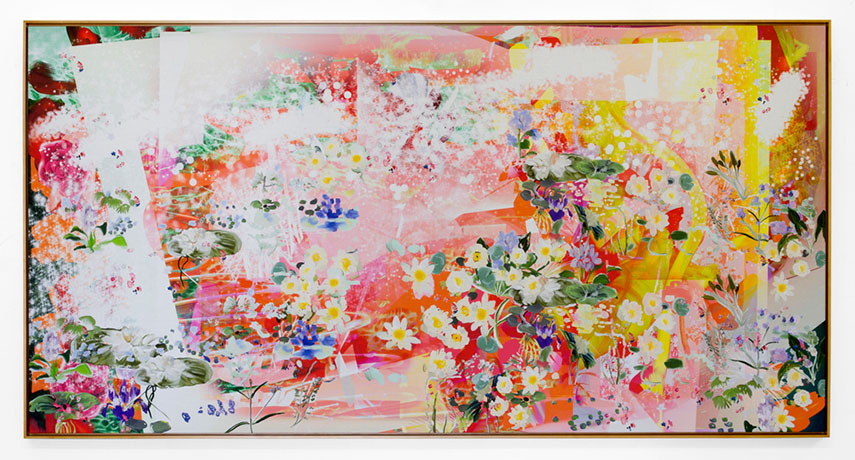
Pure Digital Production
We also have to mention the medium of strictly compuer-based art, a technique that is completely exclusive to modern times. Some of the well-nigh interesting and successful computer inventors out at that place are Charles Csuri (considered the begetter of estimator art and computer graphics), Kyle McDonald (an creative person/hacker), Sara Ludy (she actually does magic tricks with pixels) and James George (explores the means how nosotros run across the world through applied science), but there are besides creatives like Jodi, Phillip David Stearns and Jon Rafman who experimented with the potentials and boundaries of computer fine art.
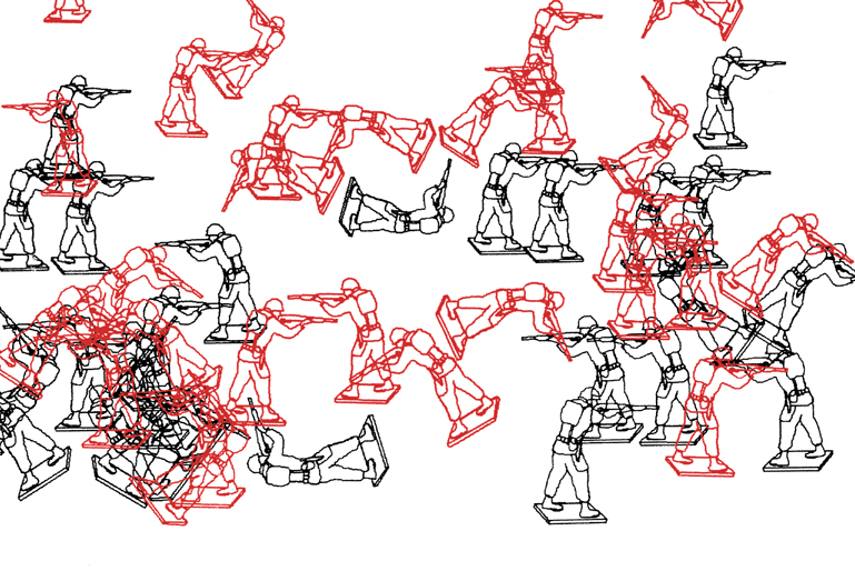
The Aesthetics of Computer Drawings and Paintings
We should besides mention crative practisioners who have not based their creative digital efforts on conceptual theories but instead decided to focus on pure visuals and wonderful aesthetics - standing out for the beauty of their animation pieces, we mention Bobby Chiu, Cristiano Siqueira, Daniel Conway, Cris de Lara and Tae young Choi.
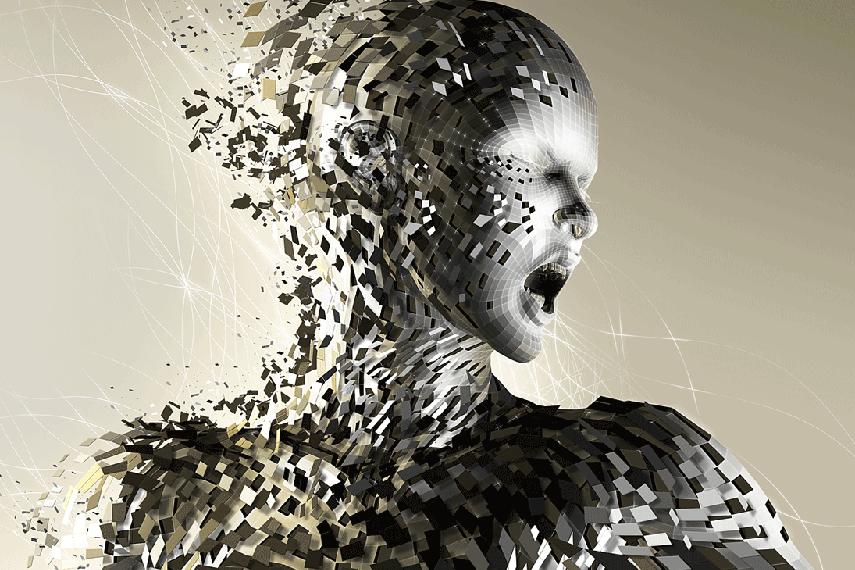
Combining Traditional and Modernistic
Earning a place in this commodity due to the playful nature of his artwork, Michael Manning is a man who starts every single ane of his works with a computer plan, acting out the experience of dabbling in oil paint and later press them, imitating the physical appearance of an actual acrylic brushstroke. In many ways, Michael Manning's practice in painting, video, sculpture, and computer-based piece of work explores the relationship between technology and the analog.
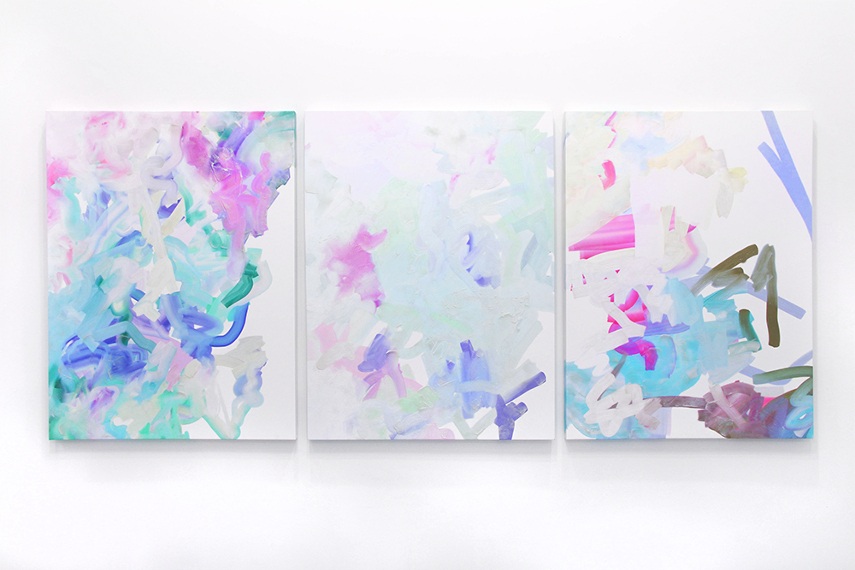
Applied science and Performance Art
Technology in performance field largely emerged with Fluxus and Gutai, two international 1960s avant-garde movements that attempted to establish new creative vocabularies - in this day and age, in that location are many performers who rely on technology to brand the most out of their shows. One of the nigh impressive artists of this type is undoubtedly Chris Milk, a man whose pantomime-similar performances have been astounding audiences for years.The aforementioned Cai Guo-Qiang also authors operation pieces, often combined with his already explained technique of using explosives.
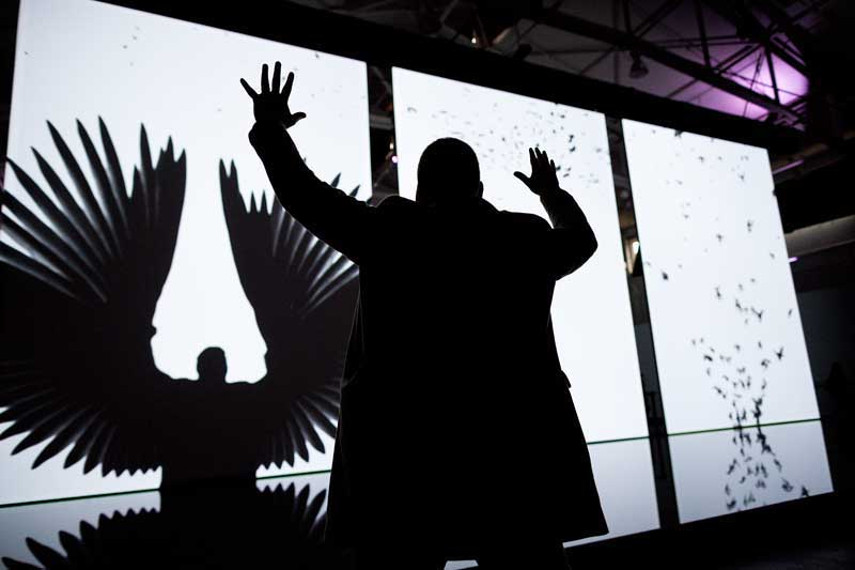
Photography and Movie
The honorable mention goes to photography and picture show, the two similar mediums that are almost e'er mentioned when discussing contemporary techniques that use technology to their advantage. With numerous filmmakers and photographers out there, we shall proper name an interesting and unusual Ben Tricklebank, a young author who decided to make utilize of his extensive scientific cognition and talent for shooting films to make interactive movies in which the viewers are responsible for which course the picture show will eventually take.
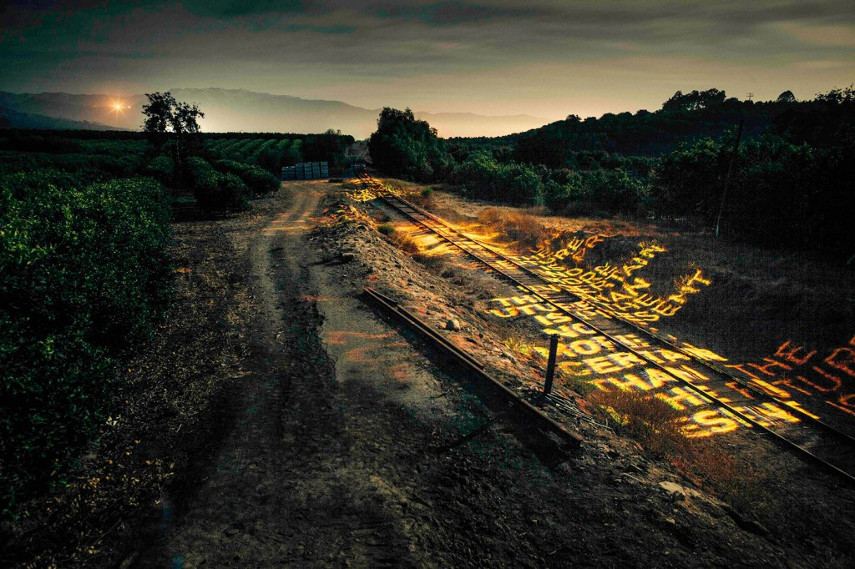
Incredible Shows of Rafael Lozano-Hemmer
At that place are also various artists who set up installation pieces based on science, depending on effects only modern engineering is able to provide them. One such creative personality is Rafael Lozano-Hemmer, a Mexican installation master whose impressive laser pieces have been astonishing audiences worldwide.
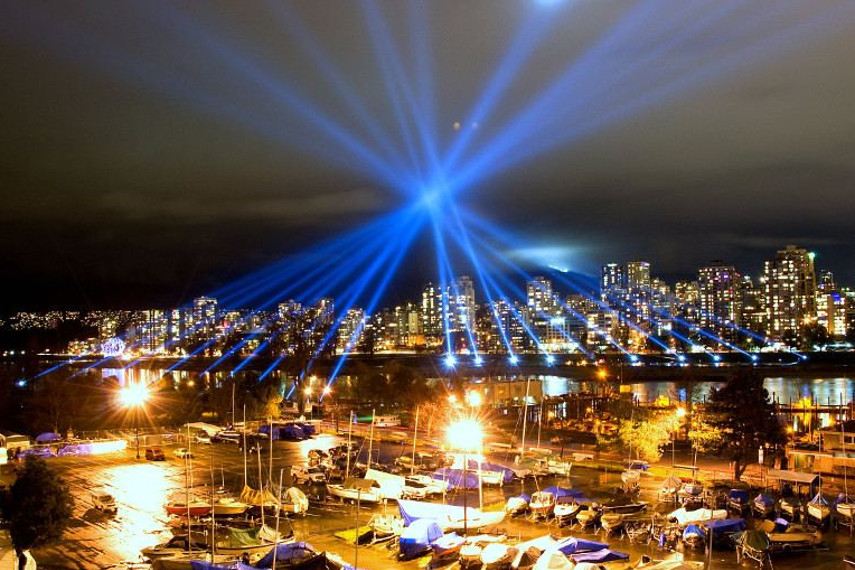
Manipulating the Sound
Much of the sound art is also quite dependent on the technological advancements, equally the works of such artists like John Wynne could never be realized if the science did not intervene. Controlling sound may exist much more circuitous and diverse than what you may expect, so make sure to check out artists such every bit the aforementioned Wynne.
Afterward this list that really just scratched the surface of the incredible amount of artists who work alongside technological discoveries, it is obvious what the goal of such contemporary artists is - use the platform of new technologies and create a base for new bold directions.

Where to Master Both Art and Technology
When information technology comes to learning and advancing in an art course that requires a solid cognition of technology, the learning curve seems to be a bit steeper when compared to one of the more traditional arts such as painting - soon put, it may not exist all down to practice. Whilst you are able to be a self-trained sculptor or a drawer with realistic chances of condign effective at what you exercise, arts that require technologies are a whole different ball game - an aspiring artist should really consider the option of attending classes or seeking mentorship. Regardless of where y'all alive, you should be able to find a schoolhouse or an institution that will enable you to brand either the first or the side by side pace in your development. You volition be able to meet similar-minded individuals, broaden your horizons, piece of work in teams and master new techniques in a much shorter time frame when compared to the flow needed to figure some things out on your own. In order to indicate y'all in the right direction, we wish to name a few proven institutions effectually the globe who offer opportunities to advance your skills, masterfully balancing between creative theories and technological approaches. Every faculty on this listing will offering you lot, the educatee, an opportunity to heighten the desired skills to their maximum.
The Arts and Technology (ATEC) programme at the University of Texas at Dallas is dedicated to, every bit their motto states, merging the innovation processes of artists, scientists and engineers by exploring experimental models through new technologies.
The University of Florida Higher of the Arts offers an interesting program called Art + Technology that concentrates on integrating the language and methods of science through a prism of art.
School of the Art Institute of Chicago'southward (SAIC) besides has a fantastic department dedicated to preparation artists of the future, The Department of Art and Technology Studies.
University of California, Santa Barbara, also has a like trans-disciplinary program that fuses mixed media, informatics, engineering, electronic music and virtual art research, exercise, production, and theory.
Parsons School of Blueprint in New York offers a BFA in Fine art, Media and Technology, an interdisciplinary form of study through which students explore the dynamic intersections of pattern, fine art, media, and technology.
Carnegie Mellon Higher of Fine Arts has a highly praised grade highlighting the intersection of arts and technology.
Louis Riel Arts & Applied science Centre (ATC) in Winnipeg place a priority on quality, manufacture-driven training in a professional civilization divers past high expectations.
Eye for Arts and Engineering science in British Columbia is an excellent choice if you want to perfect areas of film-making, animation, audio engineering, manner pattern, event management, interior blueprint, photography or graphic design.
Saxion University of Applied Sciences in Netherlands has an Art & Technology program which emphasizes the creative uses of technology. Keeping everything above in mind, it is completely fine to try and acquire modern techniques on your ain - furthermore, it is even encouraged if you are the type of person who enjoys such an approach to learning.
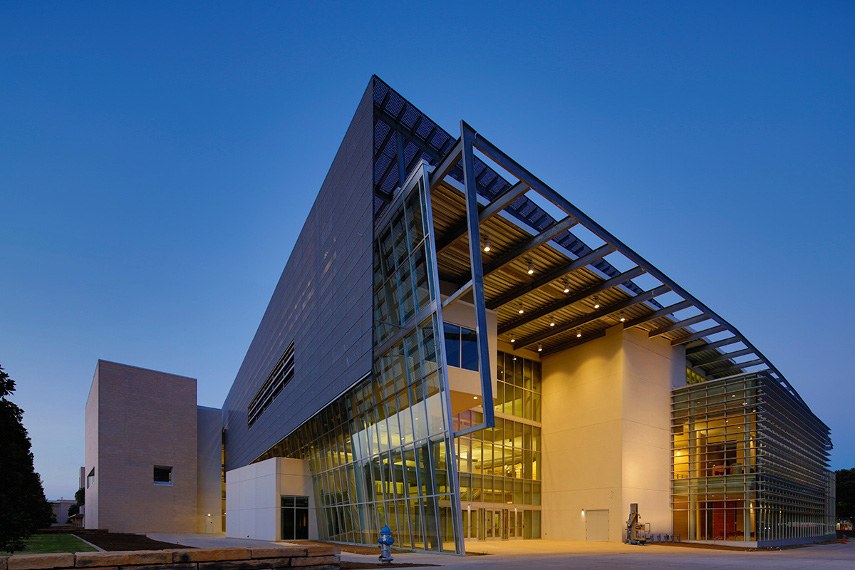
A Disputed Relationship
After everything you've read above, it is quite obvious that engineering science is redefining art in innovative, ofttimes strange ways. As is the case with all mediums and genres, the critics and audiences here are only equally divided into those who believe scientific discipline'due south touch on on creativity is a positive or a negative moment in fine art history. When this discussion arises, there are usually many raised eyebrows that openly criticize such an approach challenge that engineering science but manages to break the bail connecting the author with the piece, besides as making the entire process of creating art much easier and more trivial. This is, of form, entirely false.
Firstly, as long as the artists continuing behind their pieces stay creative and imaginative, there is no cause for business organisation. Secondly, art does not have to be complex or difficult to make in order to be grand - think Malevich or Duchamp . In fact, the entirety of modern art was dedicated to proving that the procedure and aesthetics of a piece are completely secondary when compared to the idea placed behind it. It is all most the experience the writer delivers to the public, changing how the viewer thinks, feels and views the world, makes them recall or merely provokes them. These aspects are what actually counts and it has admittedly cipher to do with the techniques that the writer chooses to use. With that being said, we should definitely not be intimidated by the technological presence in art as it does not touch on the very core of creating and experimenting - instead, nosotros should simply sit back and relish the impressive diversity modern times tin can offer.

Editors' Tip: Data Arts: Intersections of Art, Science, and Engineering (Leonardo Book Serial)
Providing us with the first comprehensive survey of international artists who comprise science, biology, kinetics, telecommunications, the computer, and the physical sciences, the book also incorporates the relevant fine art theory and personal statements of the surveyed artists, hoping for a better agreement of the new artistic practice. Examining the artist'southward role in society, the writer of the book Stephen Wilson considers the idea that the creative figure must be an active partner in determining the management of enquiry and pushes for the final fusion of science and applied science every bit a vital tool for the understanding of the globe.
Written by Silka P and Andrey V.
All images used for illustrative purposes but. Featured image: Naum June Paik - Electronic Motorway. Image via blogs.setonhill.edu; Tatsuo Miyajima - Mega Death,1999, installation view, Nihon Pavilion, 48th Venice Biennale; Yayoi Kusama's Infinity Mirrored Room at Wide Museum; Ralfonso - "Dance with the Wind" Kinetic Sculpture at 2008 Beijing Olympics in front of "Ice Cube" Pond Stadium; Rosaline de Thélin, Time SMILES, Homos Luminosos, 2008 - 2010
Source: https://www.widewalls.ch/magazine/the-serious-relationship-of-art-and-technology
0 Response to "Relationship Between Art and Technology in the Ancient Art"
Postar um comentário